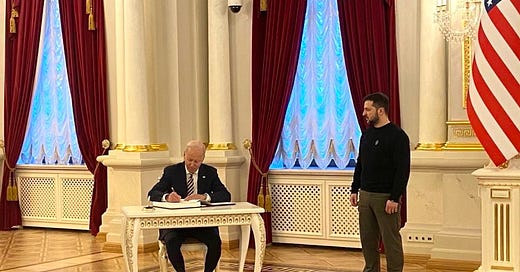Ukraine Partition
The Math on Ukraine Doesn’t Add Up, Russian Advance is Ukraine Collapse, Russia's War of Attrition, Why the West is Losing Ukraine, China Surpasses US in Diplomatic Influence.
The Math on Ukraine Doesn’t Add Up
By Senator J.D. Vance (junior senator from Ohio): April 12, Washington DC
By J. D. Vance
Mr. Vance, a Republican, is the junior senator from Ohio.
President Biden wants the world to believe that the biggest obstacle facing Ukraine is Republicans and our lack of commitment to the global community. This is wrong.
Ukraine’s ch…





